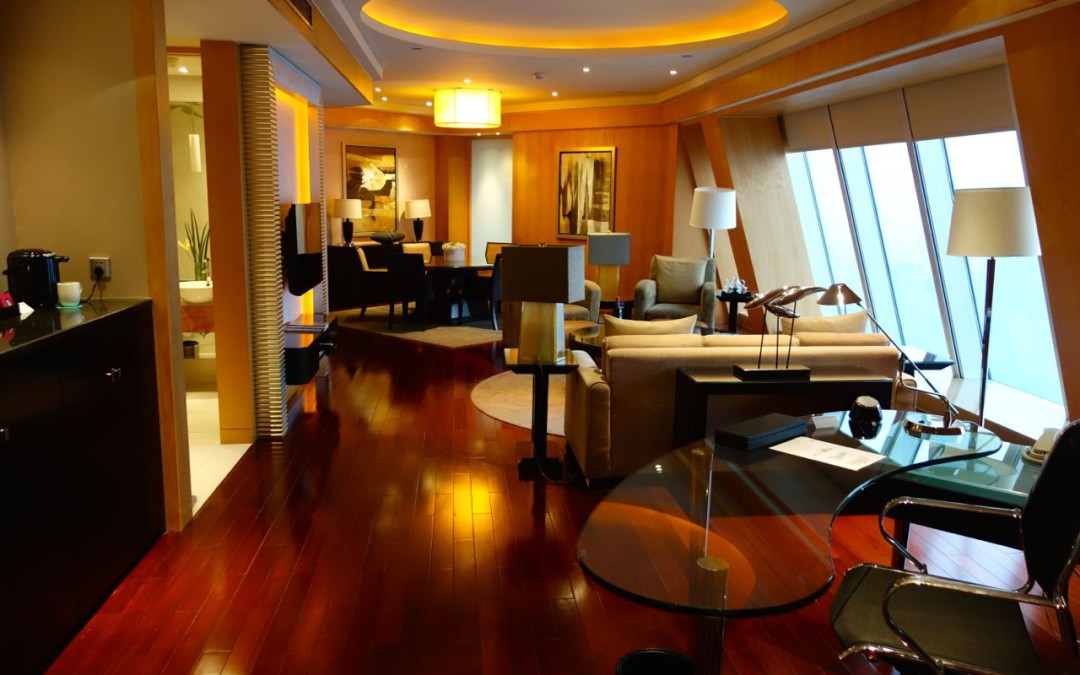
Why it pays to be loyal to a hotel chain
The hotel in Bangkok gave me a luxurious suite. In the morning I feasted on their sumptuous buffet breakfast. They granted me a 7:00pm checkout, since I was taking a late-night flight. All for free. It pays to be loyal to a hotel chain, in this case the former Starwood, now Marriott program.
To be upscale on a budget almost requires one to be loyal to travel programs from hotels to airlines. Yet, I have met so many people who say, “Oh, I just stay in the convention’s recommended hotel.” “I just picked a flight on Expedia.” They are missing out on a chance to move upscale, while still holding to a budget.
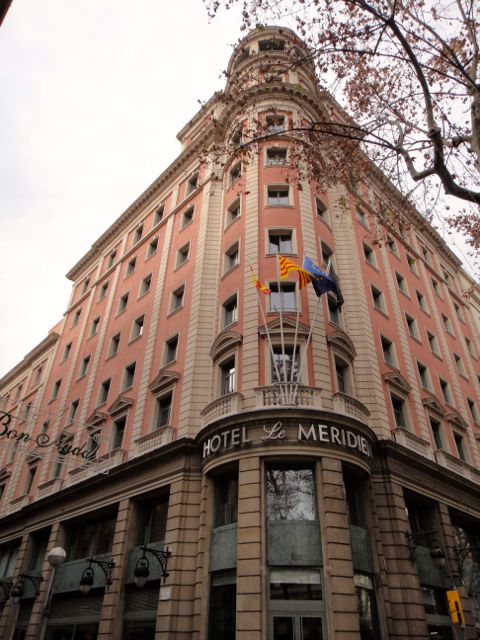
Personally, I made a decision more than a decade ago to try to stay in Starwood properties whenever possible. They offered plenty of choices across a range of prices, with The Luxury Collection and St. Regis on the top end, then Westin, W, Le Meridien and Sheraton, and specialty brands, like Aloft and Elements. With more than a thousand properties in 100 countries, I could usually find what I was looking for. I first achieved Gold status. Then 50 nights in a year led to Platinum privileges. Finally, 10 years in a row of Platinum earned me Starwood Lifetime Platinum.
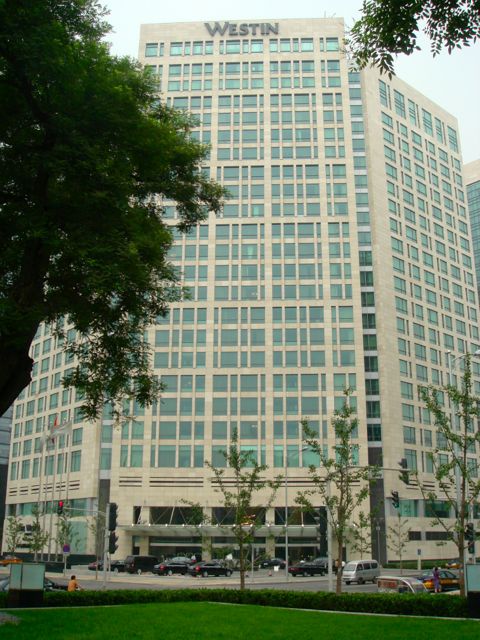
So what? Well, for example, as a Platinum member I usually book the cheapest room possible, because I know the hotel will upgrade me, often to a suite. Breakfast is included, as is a 4:00pm checkout. Lots of things that we all hate to pay for are complimentary, such as Internet, bottled water, fitness centers, and club-level rooms. I can even book a room when the hotel is sold out. I earn bonus points, which keeps me playing the game. If I absolutely require a suite, say on a family trip, I am awarded a number of suite nights a year to tap into. The list goes on.
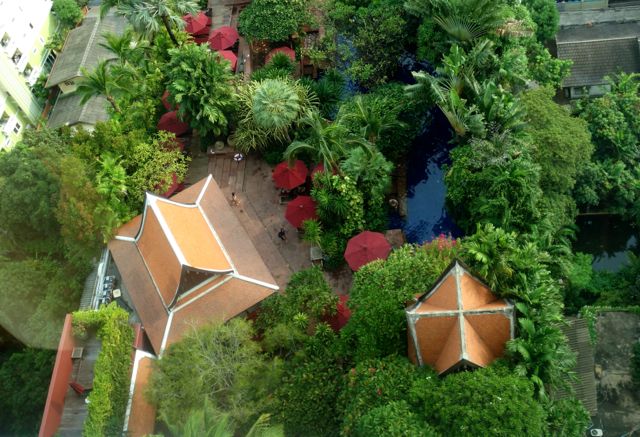
The Starwood program I refer to got swallowed up in the 2016 acquisition of Starwood Hotels & Resorts by Marriott, and in August, 2018 they finally combined the programs. The result is a lot more properties to choose from, but a lot more people vying for the perks that come with elite membership. There are other good loyalty programs out there, depending on your preference. Just do your research and select the right program for you. Then stay loyal!
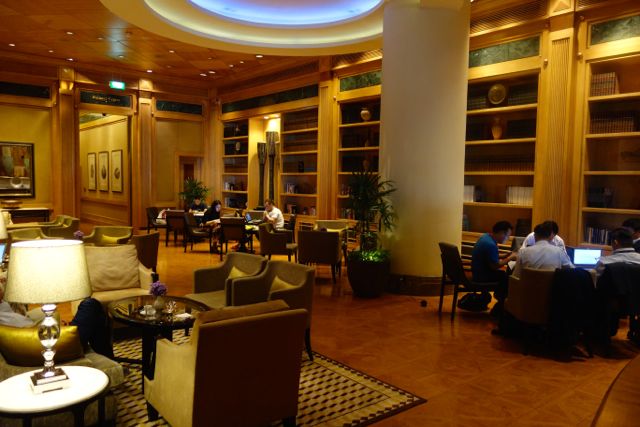
I plan a trip to Stockholm for the TBEX conference. The closest hotel to the convention center is the Radisson Blu, with a special TBEX rate of about US$200, including tax. I would be tempted to stay there, with the convention just a 5-minute walk from my 24-square meter room. But just 3 minutes further away is a Starwood/Marriott program hotel (Sheraton), where I could probably score a 37-square meter junior suite, buffet breakfast, etc., for the about the same price. Or I could drop the price to US$110, if I wanted to use some points each night (cash and points option) or totally free, if I wanted to cash in more points per night.
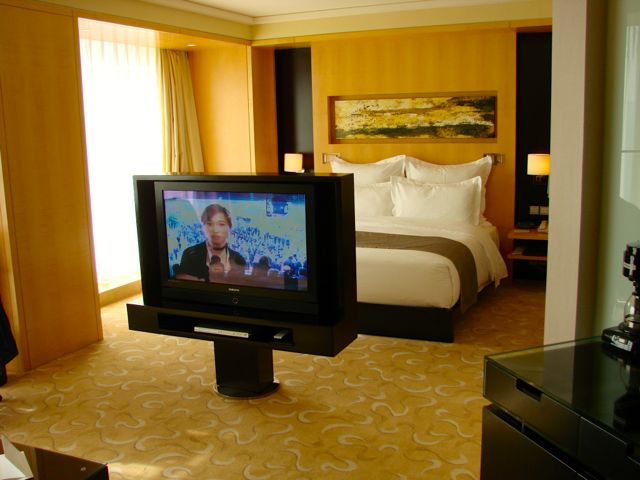
Ah, the points game. It’s not just about using airline miles. If you stay in 10 different hotel chains over the course of a year, you will rack up a scattering of points in each, basically of little value. But if you stayed loyal to the same brand, you may have earned enough points for a free night. The hotel in Bangkok I mentioned at the beginning of this article was the Sheraton Grande Suhkumvit, a Luxury Collection hotel. Besides the 4-room suite, amazing world-class buffet breakfast, and free drinks and food in the Library, I was staying for free (using points).
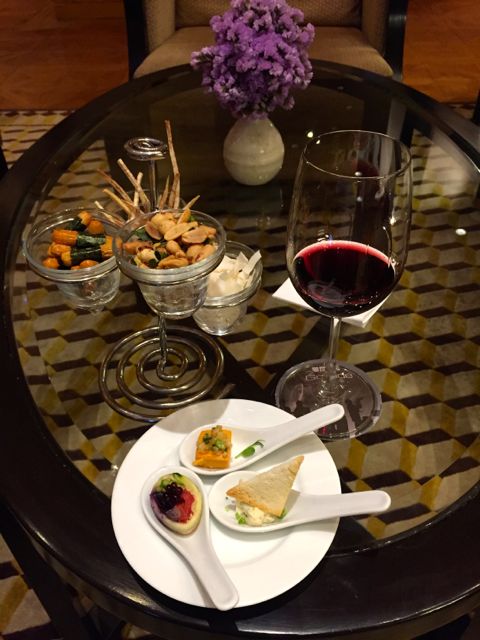
Don’t forget the almighty credit card. There is a reason the Starwood Preferred Guest (SPG) American Express card is one of the most popular among frequent travelers. I use this card a lot, especially for hotel stays, and it gives me enough points for about 10-12 free nights every year. Okay, I spend a lot. But if you figure an average upscale room in a major city costs about US$300 per night, including taxes, that Amex card can save me more than US$3,000 a year! Want even more flexibility? I also carry the Chase Sapphire Reserve card, whose elite rewards points can be used for airlines, hotels and more. What’s in your wallet?
You need to figure out what a point is worth to you. In my Stockholm example, to cash in 10K points in lieu of paying about US$200 a night, would make each point worth only 2 cents. The cash and points option is worse; each point is worth about 1.5 cents. I should pay the full rate and save my points for a better deal. I recently spent a weekend at the Westin Miyako Kyoto, Japan, where my room would have cost about US$500 a night. However, I was able to get a suite for just 10K points a night, so each point was worth 5 cents!
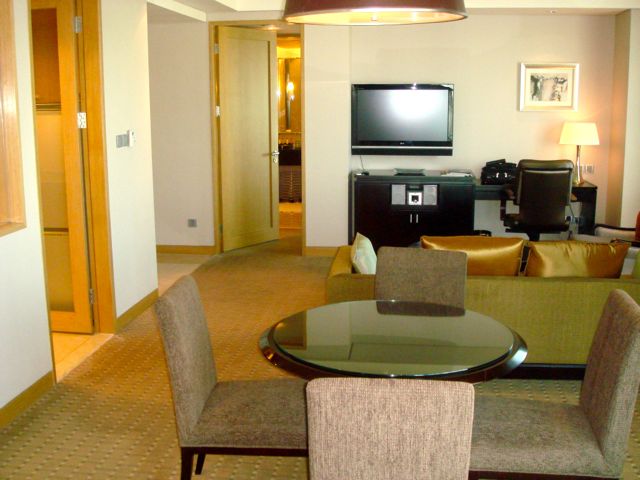
If you travel a lot and follow my advice, you can build up zillions of points to use in select situations, like my Kyoto example. So get out of that cramped room and enjoy suites and other amenities you might be missing out on today!
Coming up I will explain why it pays to be airline loyal too. Subscribe in the box below, and I will let you know when that post is written. And feel free to comment below the box.

How to save on business class flights
I didn’t want to spend US$18,000 for two Swiss business class tickets, L.A. to Zurich roundtrip. Later, the airline let me bid on those same lie-flat bed seats. Voila! … There is an airline flying business from the U.S. to Asia – wonderful Korean service for half the price of some other airlines, but with the same amenities. … From ANA to Air Canada, there are lots of exciting options out there. I will help get you started on flying international upscale on a budget.
Frequent flyers know by now there is a cat and mouse game being played. Premium class seats provide lucrative revenue; it’s a key reason why airlines expand business class sections on the larger aircraft and provide more amenities to those passengers. If they can charge, say US$9,000 for a seat, when the smaller one a few rows behind costs only US$1,500, it’s a pretty good deal for the airline. But what happens when that seat goes unsold? Airlines used to offer last minute upgrades to their most loyal customers – a nice perk, but not a win for the airline.
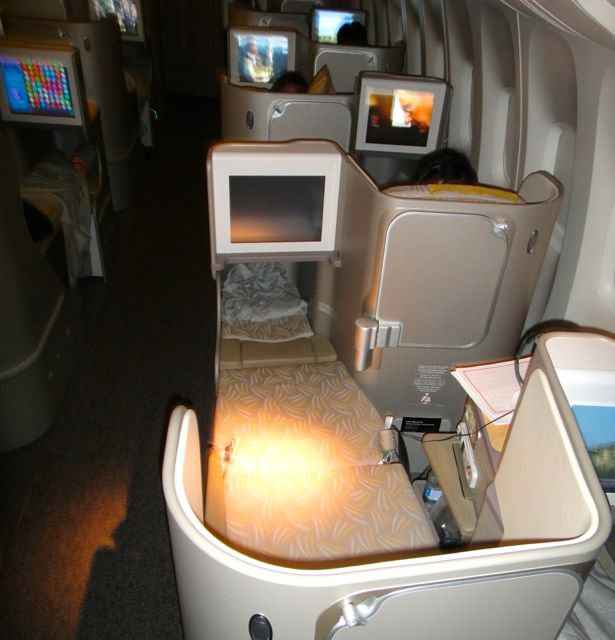
Bid for business class
As a creative move in the game, many airlines now offer economy passengers an opportunity to bid on those unsold seats. I paid about US$2,500 for two economy seats from LAX to Zurich. I just couldn’t justify spending US$18,000 for business. I want upscale, but on a budget. Think what I could do with all the money I was saving – luxury hotels, grand Airbnb apartments, personal tours and more. That’s the way I think.
Then, Swiss International Airlines sent me an email. How would I like to bid on business class seats? There were rules, of course, such as a minimum bid, timeline to back out, a commitment if I won, etc. But it was fun, too. I was able to see how many seats were still unsold and place a bid. They even offered a little real-time gauge that told me their opinion of my bid – weak to strong. In short, I bid what I thought was a fair amount, but a fraction of the original business price, and I won! Specifically, I bid twice, once on the outbound flight and later on the inbound, winning each time.
Guess what? The airline won too. They received money for two previously empty seats and may have also resold my economy seats. It’s a win-win. At least that’s what I told myself after a fine Swiss dinner, as I lay down for a good night’s sleep on the 11-hour flight. And don’t we owe ourselves a great start to an international trip?
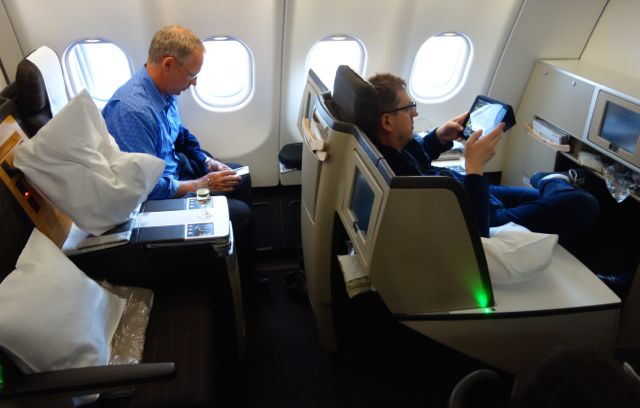
Maybe the only non-winner was the guy across the aisle, who might have paid full price. But variable pricing has always been part of the airline’s game. And he was assured his seat. I had to bid for ours. I could have lost. Or it could have been a full flight, without even an offer to bid. That’s all part of the game.
Many airlines are using a third-party company to manage this complex auction for them. If you are interested in more details about the game, here’s a Guide to Bidding from The Points Guy. Note: I would rather send you to a site that tracks these kinds of programs, as rules can change often.
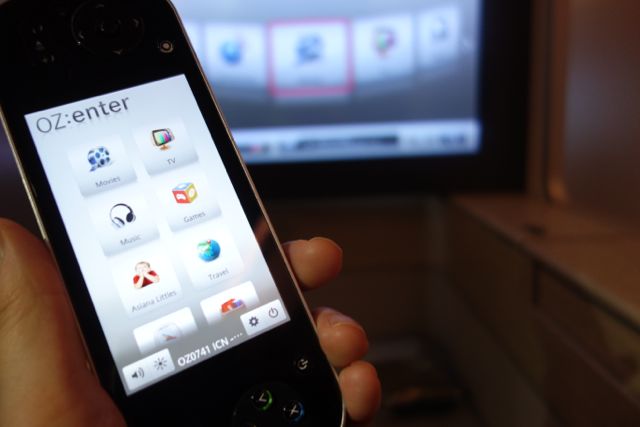
Asiana Airlines
One of my favorite airlines in the world is Asiana – the “other” Korean airline. They offer award-winning service from always friendly and courteous flight attendants and ground staff. They are one of only 7 Skytrax World 5-star Airlines. But the best news for upscale travelers on a budget is their discounted business class. I have rarely paid much more than US$4,000 to fly from Los Angeles or San Francisco to numerous destinations in Asia – Beijing, Hong Kong, Shanghai, Bangkok, etc. I have been flying them regularly since 2006.
What’s the catch? Well, nearly every route includes a plane change in Seoul (Incheon), South Korea. Not that it’s a bad thing. The Incheon airport is consistently rated the second-best airport in the world (behind only Singapore). There are loads of things to do. And the Asiana business and first class lounges there are excellent. Think massage chairs, showers, Korean food and drink, all in spacious surroundings. The stopover also breaks up the long trip a little.
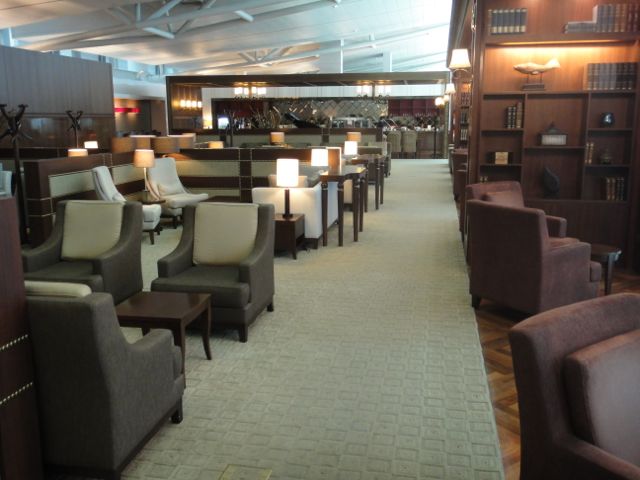
Asiana’s “Quantum seating,” with lie-flat beds and large monitors, matches any business class in the sky today, but in some cases at half the price. I almost hate to tell everybody, as they only offer two flights a day out of LAX. On top of that, I use a Korean travel agency in Los Angeles, who often discount the price even further. If you are interested in this option, email me at Stephen@journeyswithstephen.com and I will send you more information.
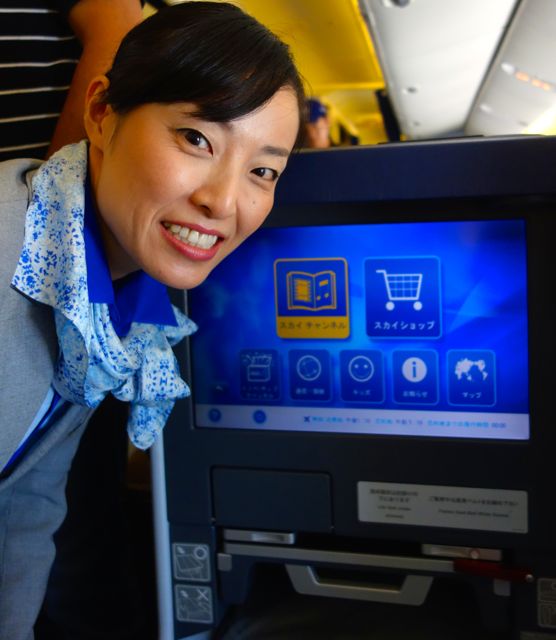
ANA (All Nippon Airways)
Speaking of favorite airlines, I have to mention ANA for those same Asia routes, except their stopovers are in Tokyo. Another World 5-star Airline, they also sometimes offer great business class pricing. One trip this year, I extended my layover in Japan from 5 hours to 5 days, which allowed me to visit Kyoto, for only a slight additional charge. Now that’s upscale on a budget!
ANA has some of the newer aircraft flying trans-Pacific. My most recent journey was on a plane where pull-down window shades were replaced by push-button dimmers, as seen in the photo. Pretty cool.
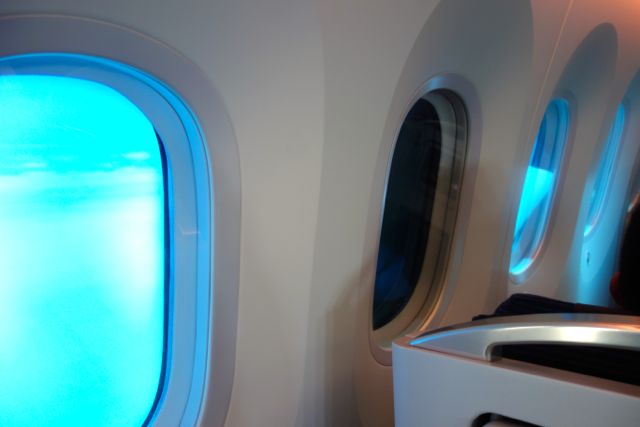
For travelers in the Western U.S. and Canada, Air Canada is another interesting alternative worth investigating. Their flights to Asia are direct from Vancouver. The prices for business class look very good, although I have not used them yet. Why? There are significant change fees, and it seems I am often changing my travel dates.
There are so many ways you can fly business class on a budget. I am only touching on a few in this post. Some major methods involve mileage upgrades and sharing miles within a network, which I will post about later.
Sites like Expert Flyer offer lots of information, including seat alerts. Of course, you should always check Seat Guru, to see if those business class seats you are reserving really do turn into lie-flat beds. Traveling Well For Less explains how to best turn your credit cards into miles.
What do you think? Do you have any advice for flying business class on a budget? What sites do you use? Please comment below!
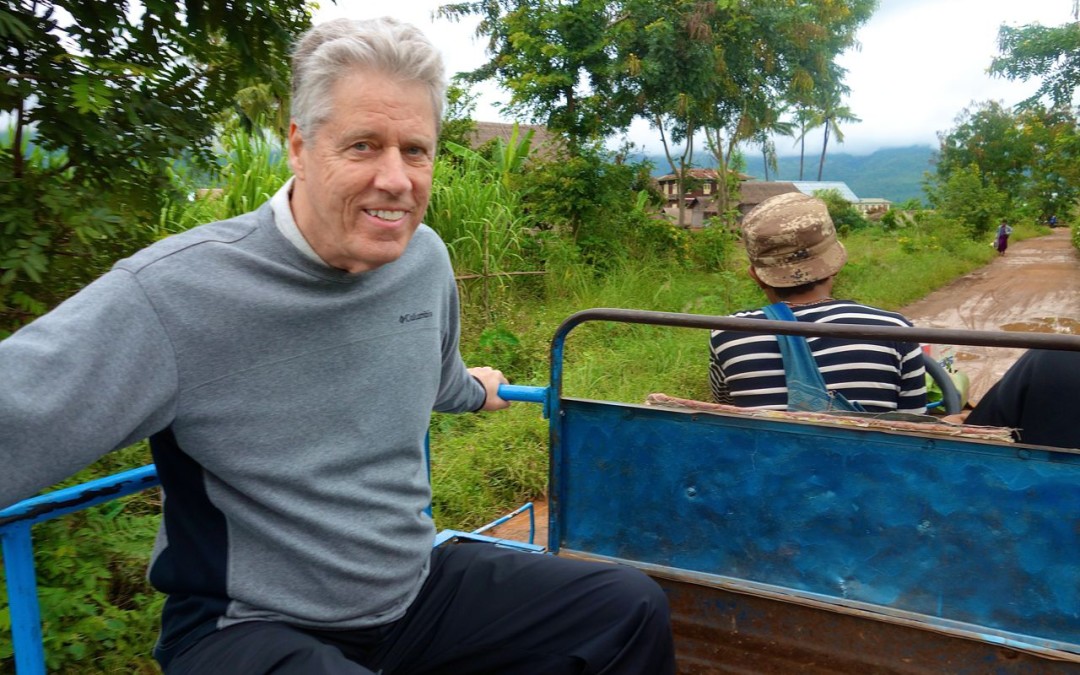
Changes in latitudes, changes in attitudes
Am I really 14 1/2 hours ahead of Los Angeles? Why am I now craving pizza in a land of delectable Thai food? Do I even care about the U.S. news anymore? These are just some of the reflections from a month on the road in Asia. And I spend a lot of months away from home. What reflections do you have when you change your latitude?
Apologies to Jimmy Buffett, who ran into a chum with a bottle of rum, and we wound up drinkin’ all night. I have no such excuse for what I am writing now, but it strikes me there are some tips and advice in here somewhere. So here goes, still under the influence of jetlag.
#1. I only suffer jetlag returning from Asia. Thanks, NASA!
Yes, studies by NASA and others with lots of degrees behind their names have told us that it is harder to adjust our body clocks when traveling from west to east. NASA’s chief of fatigue management (nice title) also says it takes about a day to adjust for every time zone. So when I drop back 15 hours flying from China to the U.S., I’m supposed to take a couple of weeks to adjust?
After a decade of those flights, I have yet to figure out how to beat the system. I have tried Ambien and Melatonin and eye masks and alcohol and abstention. Frankly, nothing works, although I am usually pretty normal in 4-5 days. If you have the magic answer, let me and countless others know by commenting below.
#2. What time is it? In fact, what day is it? Do I even care?
I’m sitting in Yangon, Myanmar contemplating a Skype call to California. My world clocks app tells me to adjust back 14.5 hours. So, I email the family to expect a call from me sometime yesterday. Except it is 3:00am there, so they don’t see the email anyway.
That reminds me that I have lost track of what day of the week it is. I got to Myanmar on a Thursday, I think, but it was a holiday, and who has a holiday on Thursday? Oh yeah, Lunar calendar, full moon, got it. At this point do I even care what day of the Roman calendar we are on? I will just let people back home know I am hopelessly lost in time.
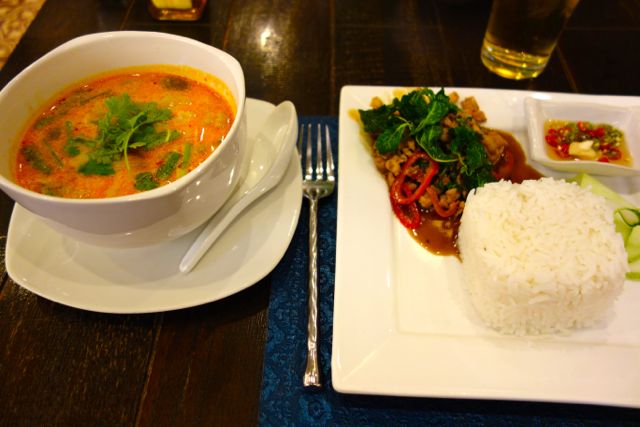
#3. Why am I craving pizza, pasta and Mexican food?
The menu in Thailand is full of delectable items, from Tom Yum Goong to Pad Thai to Duck in Red Curry. So many wonderful choices. Why am I craving Italian and Mexican food? I don’t know if NASA has studied this, but after several weeks in Asia, I start dreaming about cheeseburgers in paradise.
My theory, and I don’t have a PhD, is that Americans like to eat all kinds of cuisines on a regular basis. We will eat pasta one day, burritos the next, then Chinese, then pizza, then fish, then a salad, and so on. In China, they eat Chinese food – every day. OK, it’s incredibly delicious, but eventually even KFC looks good to me. Is that normal?
#4. Security and shoes and chargers and Global Entry
Airport security in the U.S. sucks. There, I said it. Please don’t put me on a watch list. On my recent trip to Asia I take 12 flights. The toughest security measures are in trying to leave LAX. I’m Global Entry and TSA Pre. It doesn’t matter. Stand in a long line. Take out every electronic device, in fact, anything sort of metal. Take everything out of your pockets.
Take off your shoes. On December 22, 2001, a guy had explosives hidden in his shoes. Since then, about 10 billion American flyers have had to remove their shoes. It is the only one of my 12 flights where I have to do that. Then again, we don’t get blown up.
To be fair, I have had device chargers confiscated in China. To solve the problem, I bought my latest charger in China. Also to be fair, Global Entry does work on returning to the U.S. from abroad. This time arriving at LAX, I make it from gate to kiosk to curb in 15 minutes. It’s the best $100 the government will ever take from you.
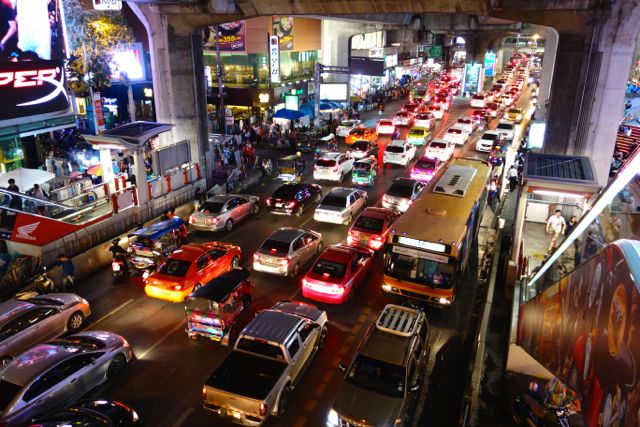
#5. Am I looking forward to traffic on the 405 freeway?
It’s 8:00pm, and I have naively waited for rush hour to clear a little. I’m taking a taxi from central Bangkok to the airport. But there’s a problem. I’ve been in the taxi for 20 minutes and haven’t made it from the hotel to the street yet; traffic is virtually stopped. Eventually we inch along a pace that is slower than walking. And I have a flight to catch. It’s like that every day here.
Of course, it could be worse. I have come from Myanmar, where every form of transportation is an adventure. Yangon, which doesn’t allow motorbikes, is now overrun by cars, and without the roads to support them. Trains are the butt of all jokes. Busses are slightly better.
Near Myanmar’s Inle Lake, I am faced with a 40-minute walk to the market. The solution is to jump in the back of a sort of motorized wagon, as we bounce over the muddy, rutted path. I ride on the back of a motorbike on the way back. It is one of the US$400 models made across the border in China. I tell him to “take it slow.” It hardly matters.
Yes, when I encounter an accident and Sig Alert on L.A.’s 405 freeway on the final leg of my journey, it seems almost acceptable. I’m driving a Lexus on a real highway. I’m sure traffic will clear anytime now.
#6. Why am I starting not to care about news from the U.S.?
When I first leave the U.S., I find myself checking the ESPN website, reading The New York Times International Edition and searching for CNN on TV. With each passing day my interest in U.S. news wanes. “What was the score in yesterday’s football game?” becomes “Is my team still playing?” morphing into “Why is every football game on TV played with a round ball?”
I am reminded just how U.S.-centric the news is in America by how many interesting stories are presented to me internationally that would never be covered in the States. I can’t avoid the global news – there’s a television built into my bathroom mirror. I become a citizen of the world. I feel more intelligent. Still not smart enough to understand rugby from Australia. “That guy was tackled and down! Why is play still going on?”
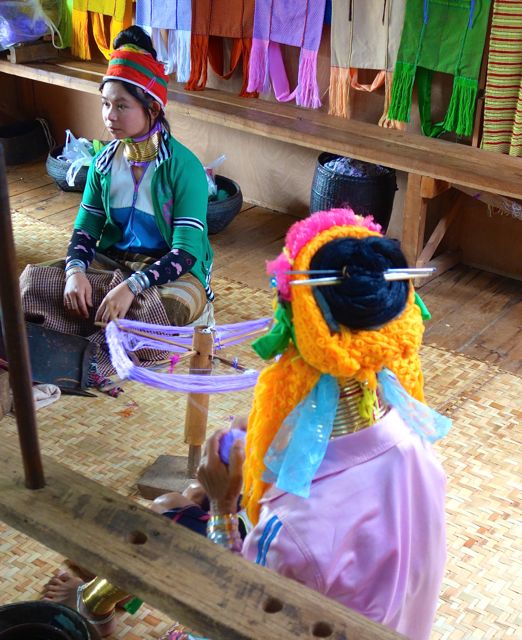
#7. I’m still glad I carry a drug store in a Ziploc bag
Bugs are attracted to me. Mosquitoes think I am dessert. How else can I explain the several bites that are showing up on my arm? And I am inside the convention center in Bangkok. Thank goodness a tube a Benadryl is as close as my hotel room inside my drug store in a Ziploc bag, fully explained in another post.
How charming and quaint was the building on stilts as our longtail boat pulls up to the dock. Inside we find some ladies from Myanmar’s Kayan tribe, with their long neck rings, weaving and selling clothing. We have stepped back in time. Unfortunately, my stomach has taken a step back also. Nothing in that local store can take the place of the western medicine I carry with me. My drug store in a Ziploc bag comes through again, as it does time after time.

#8. It’s going to take 31 hours to get home?
I enjoy looking at those old ads for Pan Am or TWA, showing well dressed people smiling as they are served their steak dinners in-flight. These days the romance is gone. We treat flights as almost a necessary evil.
I am both upscale and on a budget, so I enjoy the comforts of a lay-flat bed on Asiana, but still endure an 8-hour layover in Seoul to save hundreds of dollars. I’ve done all the free tours of Seoul, offered as a nice perk by the airport, so this time I confine myself to the business lounge.
#9. Final reflections
Reading departure signs in some big airport
Reminds me of the places I’ve been.
Visions of good times that brought so much pleasure
Makes me want to go back again.
You got that right, Jimmy.
I may be tired and jetlagged, but already dreaming of the next trip. On this one I make new travel friends from all over the world, visit old friends, see a new country in the midst of historic change, and as usual, come back a little wiser about this planet we inhabit.

Why pay extra to fly nonstop?
We needed to sign the papers the next day on our new home in Princeton, New Jersey. So what were we doing holed up in a motel outside the Cleveland airport, where we would be trapped in a snowstorm for two days? I prepaid for a luxury hotel room in Chiang Mai, Thailand. So what was I doing spending the night in the Kunming, China airport instead?
Oh, we veteran travelers have so many stories to share about the trials and tribulations of missed connections. I finally came to one conclusion that should be a mantra for the upscale traveler – fly nonstop, if at all possible, even if the ticket costs more. Sometimes you save a little money with a connecting flight, but the cost of a missed or canceled connection is priceless.
Well, maybe not priceless. In 2010, 5 U.S. universities were commissioned by the FAA to study the actual costs. They determined that missed connections alone cost passengers US$1.5 billion in a year.
O’Hare airport seems to be famous for allowing 35 minute connections to go with flights that have only a 70% on-time arrival record. Do the math, people. You will often miss your second flight. Even when the first one is on time, inevitably you will slowly deplane from row 29 only to find out you have arrived in Concourse J and are departing from G. Sprinting with a roller board is not my idea of upscale travel.
And don’t even get me started about Dallas (DFW), where you must negotiate either a long walk or wait for a train as those precious minutes tick away.
United has a flight from Detroit to Los Angeles where you first go in the wrong direction, to Newark, New Jersey. Then you have 36 minutes to make your flight to L.A. Total time, if you somehow make it: 8.5 hours. I would rather pay more and fly nonstop.
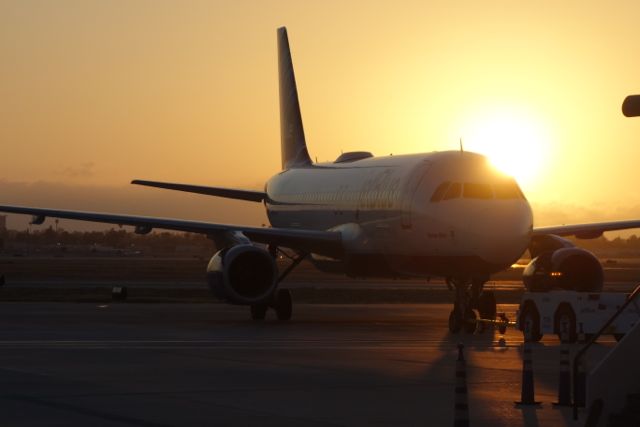
Once there were 6 of us trying to make a connection in Seoul (Incheon), South Korea, where the first flight arrived late. Business class has its perks, as we were met by agents at the plane door. They would hold the connecting flight to L.A. Then they personally whisked us through customs. As we were walking to the plane with them, the agents got a call and said to us, “You better start running now. They decided not to hold the plane any longer.” Really.
OK, sometimes there just is no way around connecting flights. We had to travel from Burlington, Vermont to Los Angeles, and a nonstop simply isn’t possible. Then our first leg to Newark was canceled, as the East Coast basically shut down due to storms. What to do? The guy in front of us in line screamed at the ticket agent. That did a lot of good. We booked connecting flights the next morning, rebooked hotel rooms and had a nice dinner in Burlington. The moral: make the best of things you can’t control.
Speaking of things out of your control, we needed to fly from New Orleans to Los Angeles; then my friends would change planes for a flight to Beijing. We had to deal with unheard of ice storms in New Orleans, but we got on the last plane before they closed the airport and stranded other friends for days. So far, so good for us.
On our final approach to LAX, suddenly the plane jerked back skyward and began circling. Those of us who are veteran fliers knew instantly that something was wrong, either with our plane or the runway or something. There was no announcement. I must admit it allowed time for some reflection, including how traveling from point A to point B safely is all that really matters at the end of the day.

Shall we try this landing again? Eventually, we did land safely or I wouldn’t be writing this story. We were later told that the light indicating the landing gear was down failed to go on. They didn’t know whether the problem was the light or the landing gear. Fire trucks escorted us down the runway to a safe stop. Oh, and my friends missed their connection to Beijing.
One time booking a connecting flight actually had a happy ending. Four of us were flying from Beijing to Los Angeles, with a change of planes in Seoul (Incheon), South Korea. The Chinese military controls the airspace in China and forced our 777 to wait on the tarmac for several hours. Fortunately, we were in business class, where Asiana staff went ahead and served us unlimited drinks and dinner.
We finally took off and arrived in Seoul more than an hour after our connecting flight was scheduled to depart. As we started to make plans to spend the night in Korea, we noticed it. The flight to Los Angeles was the same aircraft we just got off. The “change of planes” was in name only. With time for the usual customs screening and yet another Bass beer, we made our connection after all. Sometimes it’s better to be lucky than good.
What do you think? Do you have any stories? Do you agree one should always try to fly nonstop, even if it costs more?
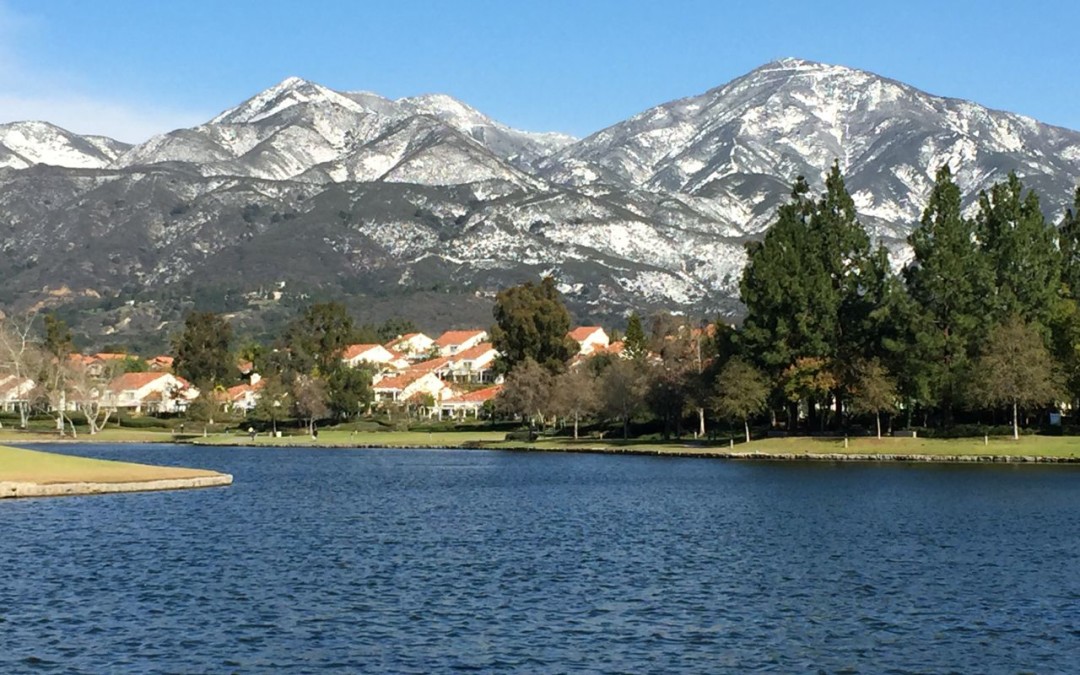
Why not take a staycation?
Staycations are harmonious with our philosophy of “Upscale Travel on a Budget.” Why?
If you realize that the greatest extra expense incurred on a trip is transportation (airfare, rental car, etc.) and lodging (hotel, Airbnb), then on a staycation you have eliminated both of those from your budget.
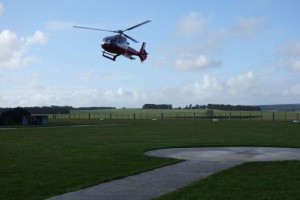 So why not go upscale and spend some of that money like a luxury-minded tourist who is visiting your area? Eat at your finest or hippest restaurant or book a private room for friends and family. Take the private tour at your zoo or art gallery. Buy premium seats at the stadium or arena or theatre. Take a helicopter ride over your city. Do the things you would love to do on a distant trip, paid for with the money you saved in travel and lodging!
So why not go upscale and spend some of that money like a luxury-minded tourist who is visiting your area? Eat at your finest or hippest restaurant or book a private room for friends and family. Take the private tour at your zoo or art gallery. Buy premium seats at the stadium or arena or theatre. Take a helicopter ride over your city. Do the things you would love to do on a distant trip, paid for with the money you saved in travel and lodging!
One of my jobs is to host people who are traveling to where I live, Southern California, and to my “adopted home” of Beijing, China. I have learned so many fascinating places to visit locally just by researching and then taking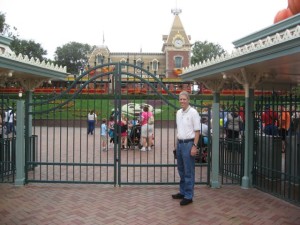 others there. Some questions asked to me and my answers:
others there. Some questions asked to me and my answers:
- “The best view of the CBD in Beijing must be from the highest point, 88 floors up in the World Trade Center, right? No! It is from the bar just above the lobby of the Park Hyatt, where your view includes the tallest building.”
- “The best time to visit Disneyland is in a middle of the day, after the morning rush, right? No! The crowds just continue to build as the day goes along. You need to be a part of that morning rush, arriving before it opens.”
- “The best time to visit Griffith Park Observatory is on a nice, sunny morning, right? No! For the views back at Los Angeles you will be looking into the sun. Go just before sunset to see the city in both daylight and at night.”
- “The best place to stay for Los Angeles would be downtown in the heart of the action, right? No! In this driving metropolis, it is better to stay in Santa Monica, within walking distance of the beach, fine shops and restaurants. Then drive around L.A. for events, theatre, sightseeing.”
- “The best section of the Great Wall to visit is Badaling, because it is closest to Beijing, right? No! That is where the big tour buses go. So, is it Mutianyu? Well, even that is getting crowded. Now we go early to the reopened, rustic Simitai section. And it’s still an easy day trip from Beijing.”
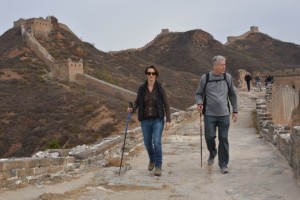
The point is, you know your home area. You can explore it the way an expert, private tour guide would. And pretend that you are on an upscale vacation while you are doing it!
I suggest you start by making a list of things to do and places to see in your area from the perspective of an out-of-town traveler. There are many websites that offer staycation ideas to get you started. For example, I was surprised that so many tourists come to Orange County for whale watching, something that I, as a local, haven’t done in years. Why not? Why do I sometimes forget that San Diego is only an hour or so down the freeway? I could visit there on a day trip as a tour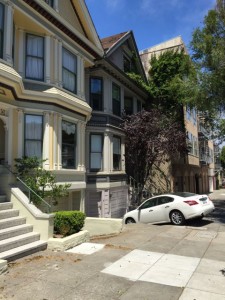 ist and then drive back to my lovely “vacation” home at night. I could do the same with Palm Springs, Big Bear Mountain, Catalina Island or Malibu. Draw a daytime driving radius from your hometown and play the same game. You may be surprised at the staycation ideas within reach.
ist and then drive back to my lovely “vacation” home at night. I could do the same with Palm Springs, Big Bear Mountain, Catalina Island or Malibu. Draw a daytime driving radius from your hometown and play the same game. You may be surprised at the staycation ideas within reach.
Here’s another advantage to a staycation. I’m betting that your apartment or house is bigger and nicer than a hotel room. I think it has more amenities even than a hotel suite (they don’t want to wash towels every day either). Well, on a staycation, that home is what you are coming back to each night. Pretend you have rented your own home from Airbnb. How much would it have cost you to stay there? Look how much money you are saving every night. Spend it on something upscale during your staycation. Or save it for the next out-of-town trip. Either way, you win!
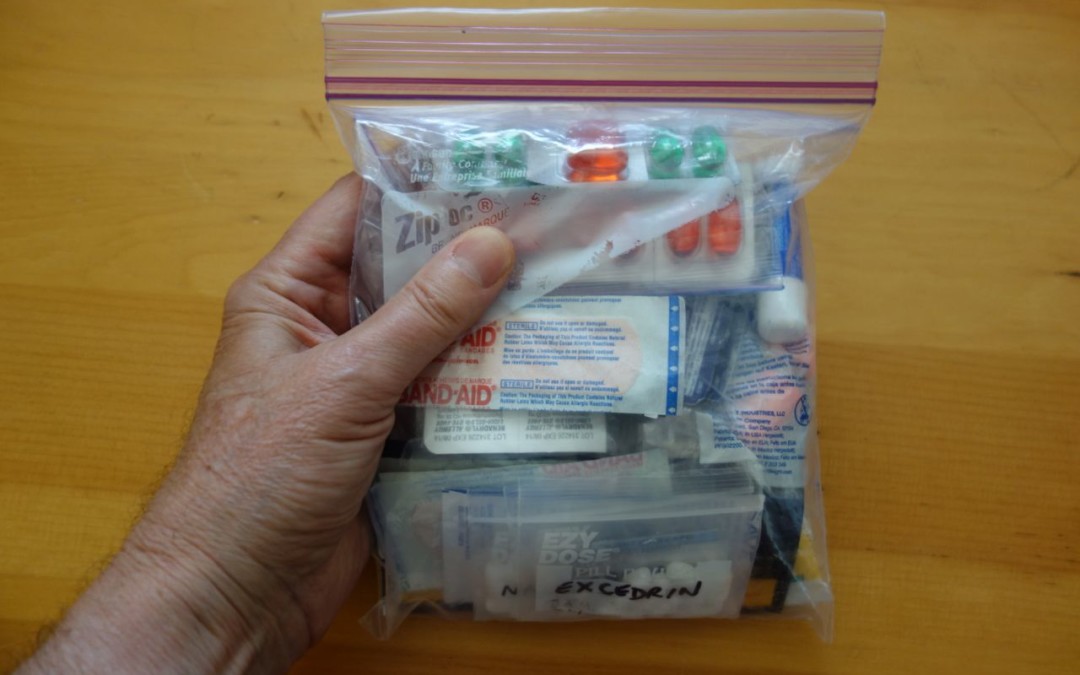
Why carry a drug store in a Ziploc bag?
Accidents happen. So do upset stomachs. And insect bites. And headaches. But what do you do when they happen in the middle of a jungle in Northern Thailand? At a remote section of the Great Wall of China? In a Cambodian pharmacy where they don’t speak English?
You carry a drug store – and a first aid kit – in a quart-sized Ziploc bag. Yes, in sickness and in health, I am never very far from my personal drug store. Mine tucks nicely into my carry-on bag, so it could never be the victim of lost baggage. Mine has just enough of everything in mini-travel size, from prescription medicine to Band-Aids to cough drops. Total weight: 7 ounces (200 grams). Total value: priceless.
What are the benefits of the drug store in a Ziploc bag? I have learned the hard way.
- Inside Angkor Wat, Cambodia, the air was filled with smoke and my open-air tuk-tuk only made it worse. To sooth my itchy, swelling, watery eyes, we drove to a pharmacy. Of course, no eye drops carried a word of English, just various percentages of ingredients I didn’t understand. And I was supposed to squirt this into my eyes? Today, I carry a tiny 3ml bottle of Refresh eye drops. Systane would have worked too.
- Oh, but that’s the next problem. Faced with intestinal issues in Beijing, I walked into a Wal-Mart to buy a familiar brand of digestive aid, such as Imodium or Pepto Bismol or Maalox. Nothing. That is, nothing but Chinese medicine with ingredients in Mandarin that I can’t read. The helpful staff suggested I go immediately to the hospital (a common suggestion in China when you need to see a doctor). Lesson: carry small quantities of the brands you know and trust, and don’t expect those brands to be available around the world.
- How often have you needed a little remedy and the drug store in your travels only carries what seems like a gallon-sized tube at a gallon-sized price? Do you really need a lifetime supply of Neosporin? Lesson: carry your own small quantities
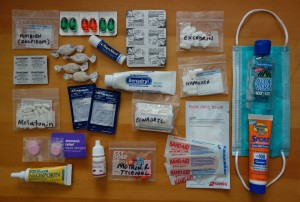 that can pass through airport security.
that can pass through airport security.
- Have you ever needed to find aspirin on an overnight flight? It’s dark. You open the overhead compartment and fumble through your bag trying to find them. It’s giving you a headache instead of curing one. Lesson: the see-through Ziploc bag works wonders in this situation. It also weighs nothing. It costs nothing. And if you must show it at airport security, it is in the approved quart size. Done.
- I also leave this drug store in a Ziploc bag in my carry-on. That way I never forget a medicine. If I’m using a big bottle of pills at home, I already have a small amount set aside for travel. I use little zip-close pill pouches, with a copy of the prescription inside. Take that, drug-sniffing canines!
- What’s not in here? Well, we don’t have many pesky bugs in Southern California. So I don’t own insect repellent. If I need it in the middle of a trip to Southeast Asia, I will just buy the local stuff there, for example, Remos Mosquitoes Control in Vietnam. It’s cheap and probably better protection for that region anyway. Same for sunblock.
- What else is not in here? It’s not a full-blown first aid kit. Some people like to carry gauze, tape, tweezers, scissors and more. I’m fine with that. You could even have one Ziploc bag for medicines and one for first aid. Just keep in mind that scissors must be placed in checked luggage (and I try not to check a bag). I once had a tiny pair of nail clippers confiscated. Who knows what evil things I could have done on the plane if they had allowed me to keep them? The world is a safer place, no doubt.
Was this at all helpful? Do you have your own stories and suggestions?
